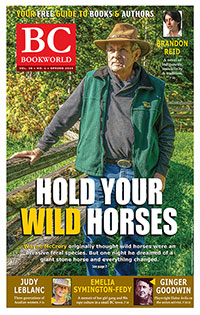LITERARY LOCATION: Fort Stikine, near the mouth of the Stikine River, on Etolin Island, between Prince of Wales Island to the west and the Alaska mainland.
Fort Stikine was situated not far south from present-day Wrangell, Alaska near the B.C. / Alaska boundary. It was one of three trading posts operated by the Hudson's Bay Company in Russian America, along with Fort Durham (aka Fort Taku, located 25 miles south of present-day Juneau) and Fort Yukon at the confluence of the Yukon and Porcupine rivers. Originally erected as Fort Dionysius by the Russians in 1834, the facility was leased to the HBC in 1838 and renamed Fort Stikine, overseen by James Douglas, who arrived in The Beaver. Four years later it was decommissioned. Short-lived Fort Stikine gave rise to one of the few recorded episodes of violence within an HBC trading post on the Pacific Coast, as outlined in Debra Komar's speculative historical novel, The Bastard of Fort Stikine: The Hudson's Bay Company and the Murder of John McLoughlin, Jr. (2015).
ENTRY:
As a forensic anthropologist in the US, UK, and Canada for over twenty years, Debra Komar investigated human-rights violations resulting in violent deaths for the United Nations and Physicians for Human Rights. She also testified as an expert witness in The Hague and across North America. While living on the east coast of Canada, she first turned to fiction. Her first two novels, The Ballad of Jacob Peck and The Lynching of Peter Wheeler, use forensic methods to re-investigate historical crime.
For her third title, Diane Komar turned her historical sights to the West Coast for The Bastard of Fort Stikine: The Hudson's Bay Company and the Murder of John McLoughlin, Jr. (Goose Lane 2015), an investigation into the shooting death of Hudson's Bay Company employee John McLoughlin Jr. just after midnight on April 21, 1842.
As the chief trader at remote Fort Stikine, on the Stikine River in present-day northern B.C., McLoughlin Jr. was known for his violent rampages. The HBC's governor George Simpson was forced to accept the fort's employees' version of events-that their commander was drunken and abusive, and the killing had occurred in self-defence--partly because HBC couldn't exercise legal jurisdiction in a fort that lay within the boundaries of the Russian empire. Simpson's inability to undertake a full-scale legal inquiry was complicated by the fact that McLoughlin was the illegitimate son of the venerable John McLoughlin who had managed HBC's affairs in the Columbia district for decades. This case led to the elder McLoughlin's disaffection with the HBC.
In her efforts to reconstruct the crime scene and solve the mystery of the death using archival research and modern forensic science, Komar largely attributes immoral behaviour to the fur traders. Publicity materials assert, "The threat from outside the fort's stockades, however, paled in comparison to the menace lurking within. Hostile as they were, the aboriginals were no match for the worthless band of miscreants, malcontents and lost boys that made up the fort's complement."
In a nutshell, according to Wikipedia: "The second Chief Trader appointed to Fort Stikine was the son of Chief Factor McLoughlin, John McLoughlin, Jr.. Unsuited to the appointment, the younger McLoughlin was unpopular with some of the Metis among the staff, who killed him in what was alleged by them to have been in self-defense at his drunken rage. Kanaka (Hawaiian) employees who witnessed the killing were to testify otherwise, and to allege that the rebel staff, led by one Urbain Heroux, had conspired with the local Tlingits to seize the post. Because the murder had happened on ostensibly Russian soil, the usual laws governing the Company and its staff, which were those of the Colony of Canada where the company's North American headquarters were, did not apply within Russian territory. Heroux and the others were taken to New Archangel for trial, and were ultimately released for lack of evidence. Governor Simpson, on his visit to the Russian American capital, was surprised to encounter Heroux at liberty on the streets of that town, but under Russian law the accused were free until convicted. Heroux was to live out his life in the Columbia District, but John Jr.'s death was said to be one of the factors embittering his father against the Company and his increasing sentiments and actions in favour of the American claim to what was becoming known as the Oregon Country."
The Bastard of Fort Stikine won the Jeanne Clarke Memorial Local History Award and was shortlisted for the 2016 Canadian Authors Award for Canadian History.
Komar has also written the textbook, Forensic Anthropology: Contemporary Theory and Practice for Oxford University Press.
BOOKS
Forensic Anthropology: Contemporary Theory and Practice (Oxford University Press)
The Ballad of Jacob Peck (Goose Lane 2013)
The Lynching of Peter Wheeler (Goose Lane 2014)
The Bastard of Fort Stikine: The Hudson's Bay Company and the Murder of John McLoughlin, Jr. (Goose Lane 2015) $19.95 9780864927217
[BCBW 2015]
Reviews of the author's work by BC Studies:
The Bastard of Fort Stikine: The Hudson's Bay Company and the Murder of John McLoughlin, Jr.
Fort Stikine was situated not far south from present-day Wrangell, Alaska near the B.C. / Alaska boundary. It was one of three trading posts operated by the Hudson's Bay Company in Russian America, along with Fort Durham (aka Fort Taku, located 25 miles south of present-day Juneau) and Fort Yukon at the confluence of the Yukon and Porcupine rivers. Originally erected as Fort Dionysius by the Russians in 1834, the facility was leased to the HBC in 1838 and renamed Fort Stikine, overseen by James Douglas, who arrived in The Beaver. Four years later it was decommissioned. Short-lived Fort Stikine gave rise to one of the few recorded episodes of violence within an HBC trading post on the Pacific Coast, as outlined in Debra Komar's speculative historical novel, The Bastard of Fort Stikine: The Hudson's Bay Company and the Murder of John McLoughlin, Jr. (2015).
ENTRY:
As a forensic anthropologist in the US, UK, and Canada for over twenty years, Debra Komar investigated human-rights violations resulting in violent deaths for the United Nations and Physicians for Human Rights. She also testified as an expert witness in The Hague and across North America. While living on the east coast of Canada, she first turned to fiction. Her first two novels, The Ballad of Jacob Peck and The Lynching of Peter Wheeler, use forensic methods to re-investigate historical crime.
For her third title, Diane Komar turned her historical sights to the West Coast for The Bastard of Fort Stikine: The Hudson's Bay Company and the Murder of John McLoughlin, Jr. (Goose Lane 2015), an investigation into the shooting death of Hudson's Bay Company employee John McLoughlin Jr. just after midnight on April 21, 1842.
As the chief trader at remote Fort Stikine, on the Stikine River in present-day northern B.C., McLoughlin Jr. was known for his violent rampages. The HBC's governor George Simpson was forced to accept the fort's employees' version of events-that their commander was drunken and abusive, and the killing had occurred in self-defence--partly because HBC couldn't exercise legal jurisdiction in a fort that lay within the boundaries of the Russian empire. Simpson's inability to undertake a full-scale legal inquiry was complicated by the fact that McLoughlin was the illegitimate son of the venerable John McLoughlin who had managed HBC's affairs in the Columbia district for decades. This case led to the elder McLoughlin's disaffection with the HBC.
In her efforts to reconstruct the crime scene and solve the mystery of the death using archival research and modern forensic science, Komar largely attributes immoral behaviour to the fur traders. Publicity materials assert, "The threat from outside the fort's stockades, however, paled in comparison to the menace lurking within. Hostile as they were, the aboriginals were no match for the worthless band of miscreants, malcontents and lost boys that made up the fort's complement."
In a nutshell, according to Wikipedia: "The second Chief Trader appointed to Fort Stikine was the son of Chief Factor McLoughlin, John McLoughlin, Jr.. Unsuited to the appointment, the younger McLoughlin was unpopular with some of the Metis among the staff, who killed him in what was alleged by them to have been in self-defense at his drunken rage. Kanaka (Hawaiian) employees who witnessed the killing were to testify otherwise, and to allege that the rebel staff, led by one Urbain Heroux, had conspired with the local Tlingits to seize the post. Because the murder had happened on ostensibly Russian soil, the usual laws governing the Company and its staff, which were those of the Colony of Canada where the company's North American headquarters were, did not apply within Russian territory. Heroux and the others were taken to New Archangel for trial, and were ultimately released for lack of evidence. Governor Simpson, on his visit to the Russian American capital, was surprised to encounter Heroux at liberty on the streets of that town, but under Russian law the accused were free until convicted. Heroux was to live out his life in the Columbia District, but John Jr.'s death was said to be one of the factors embittering his father against the Company and his increasing sentiments and actions in favour of the American claim to what was becoming known as the Oregon Country."
The Bastard of Fort Stikine won the Jeanne Clarke Memorial Local History Award and was shortlisted for the 2016 Canadian Authors Award for Canadian History.
Komar has also written the textbook, Forensic Anthropology: Contemporary Theory and Practice for Oxford University Press.
BOOKS
Forensic Anthropology: Contemporary Theory and Practice (Oxford University Press)
The Ballad of Jacob Peck (Goose Lane 2013)
The Lynching of Peter Wheeler (Goose Lane 2014)
The Bastard of Fort Stikine: The Hudson's Bay Company and the Murder of John McLoughlin, Jr. (Goose Lane 2015) $19.95 9780864927217
[BCBW 2015]
Reviews of the author's work by BC Studies:
The Bastard of Fort Stikine: The Hudson's Bay Company and the Murder of John McLoughlin, Jr.
 Home
Home




